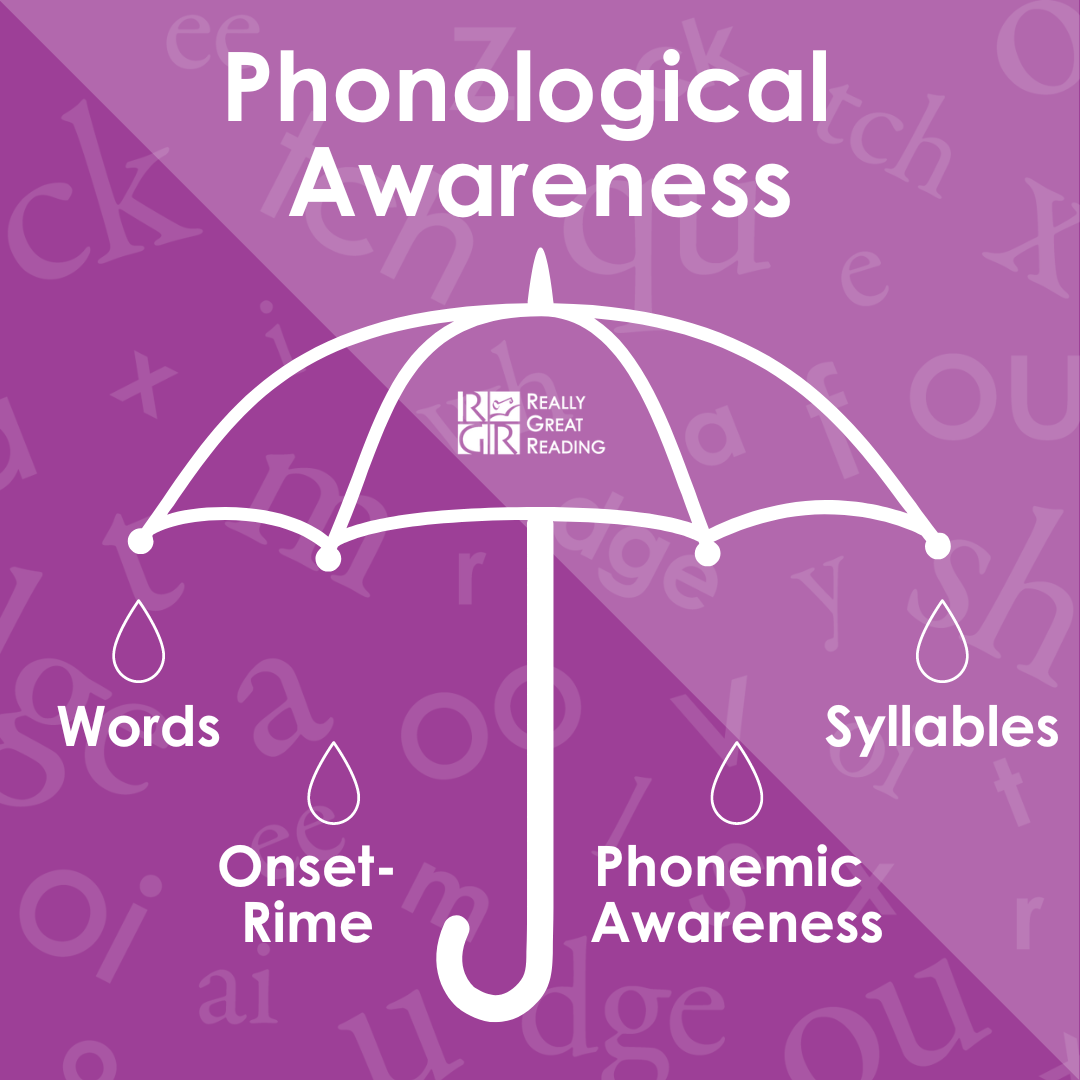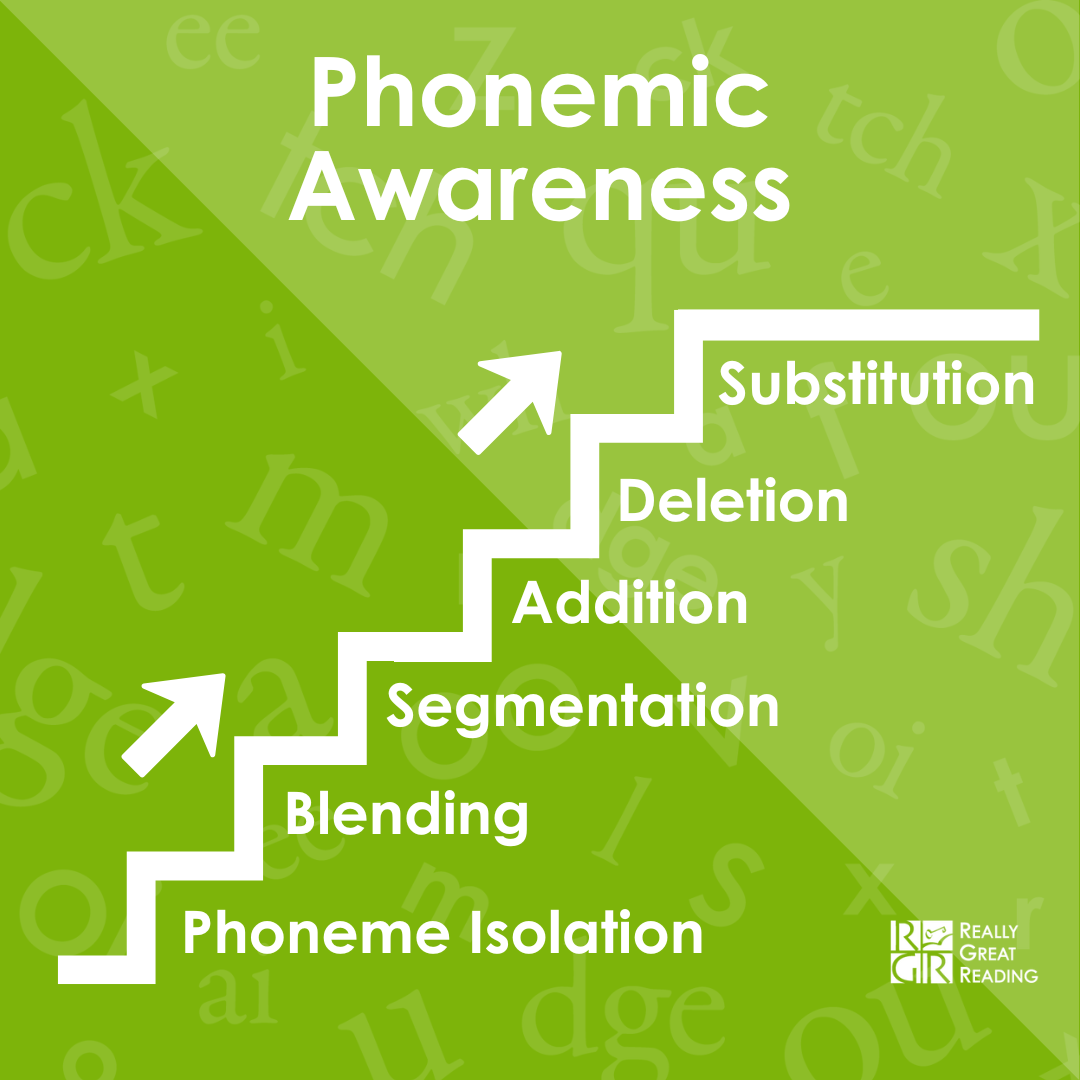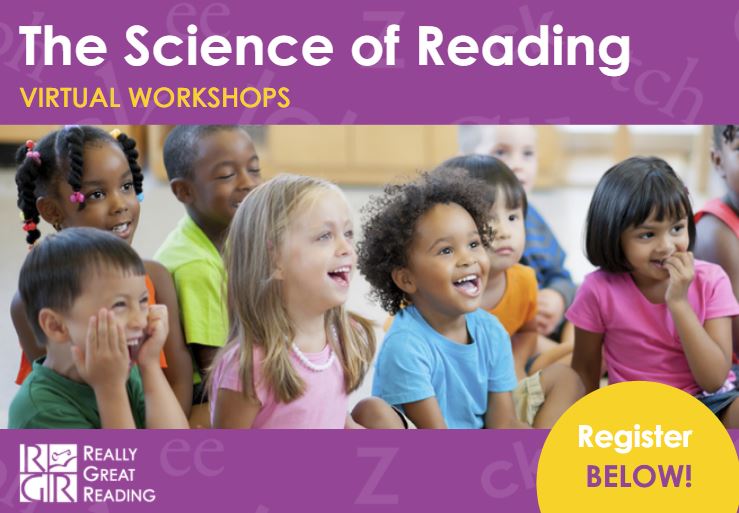What's the Difference Between Phonological Awareness & Phonemic Awareness?


What Is Phonological Awareness?
Identifying and manipulating speech at the word, syllable, onset-rime, and sound level are the marks of phonological awareness. Your phonological awareness is what enables you to:
- Hear the sentence “My dog ran away” and immediately determine that it contains four spoken words.
- Quickly identify that bat and mat rhyme, while bat and boat do not. It also enables you to:
- Determine that the spoken syllables /pic/ and /nic/ together make the word picnic and that the spoken word parts /spl/ and /ash/ together make the word splash.
- Focus on the individual sounds in words (phonemes) and gives you the ability to know that the sounds /k/, /ă/, and /t/ come together to spell the word cat.
Download our Phonological Awareness Survey>>
What Is Phonemic Awareness?
Your phonemic awareness, the most advanced phonological awareness skill, is what enables you to hear and manipulate the smallest units of speech, phonemes. Your phonemic awareness gets the credit when you can isolate phonemes and identify that the word map has three sounds, /m/ /ă/ /p/, while the word split has five, /s/ /p/ /l/ /ĭ/ /t/. Your phonemic awareness allows you to hear and segment the individual sounds /f/ /r/ /ŏ/ /g/ and to blend those sounds together to make the word frog. It is what tells you that adding /s/ to the beginning of mash gives you smash, and that deleting the /s/ from stop gives you top. Phonemic awareness at its most advanced level allows you to change the /ĭ/ in quick to /ă/, giving you quack. Isolating the individual phonemes in a word, as well as being able to blend, segment, add, delete, and substitute those phonemes, are the skills associated with phonemic awareness.
Why Are Phonological Awareness and Phonemic Awareness Activities Important in Pre-K Literacy and Beyond?
The phonological awareness and phonemic awareness tasks mentioned above are not only fun, they are also essential to proficient word recognition and decoding. Seidenberg (2017) tells us that “we read with our eyes but the starting point for reading is speech.” In fact, researchers have found that “among poor readers, 70-80% have trouble with accurate and fluent word recognition that originates with weaknesses in phonological processing” (Fletcher, Lyon, & Fuchs, 2007). We know that “when children lack awareness of the role that sounds play in words, [they] rarely learn to read easily” (Henry, 2010, p. 76). Strong phonemic awareness skills lead to strong readers because phonemic awareness lays the underlying framework for reading (decoding) and writing (encoding) (Trehearne, 2003). Although playing with words at the larger levels of syllable and onset-rime is fun and helps to develop an ear for the sound structures in words, we want to get students as quickly as possible “to where it really matters, the individual phoneme level” (Tolman, 2018).
Fletcher, J., Lyon, G. R., Fuchs, L., & Barnes, M. A. (2007). Learning disabilities: From identification to intervention. New York: Guilford Press.
Henry, Marcia K. (2010). Unlocking literacy: Effective decoding & spelling instruction. Baltimore: Paul H. Brooks
Seidenberg, M. (2017). Language at the speed of sight: How we read, why so many can't, and what can be done about it. New York: Basic Books.
-Tolman, C. (2018, July 27). The Tolman hourglass figure: Phonological awareness [Video file].
Trehearne, M. (2003). Comprehensive literacy resource for Kindergarten teachers. ERA Cuisenaire.
The Science of Reading Virtual Workshops
Educators, join us on a complimentary seat for a fact-filled, activity-driven, hands-on virtual workshop. Learn more about phonological and phonemic awareness. Take a deep dive into how to use the science of reading to teach the foundational literacy skills that lead to strong decoding and fluent reading. You’ll leave empowered and prepared to teach students to face the challenges of complex, content-area reading and standardized tests.
- Bring the science of reading to life in their classrooms
- Ensure that all learners succeed with decoding and spelling
- Infuse students with robust phonemic awareness skills
- Show students how to leverage phonemic awareness to read and spell
- Use multisensory manipulatives to engage and boost student achievement
- Effectively diagnose decoding issues in students of all ages
- Use data to measure growth, monitor progress, and adjust instruction



